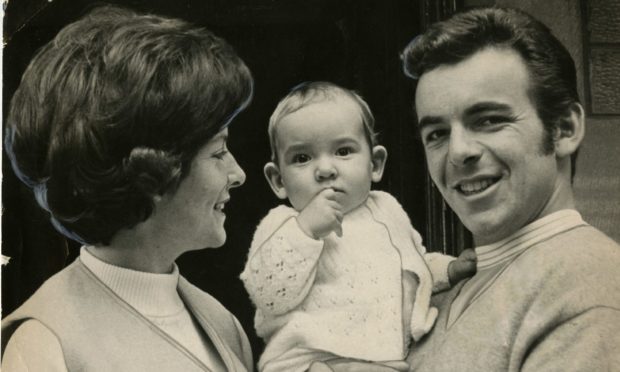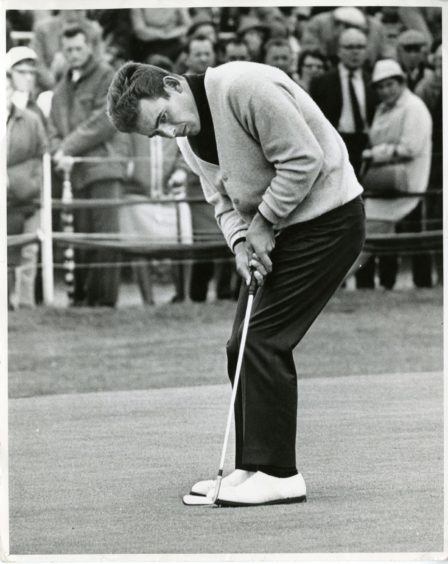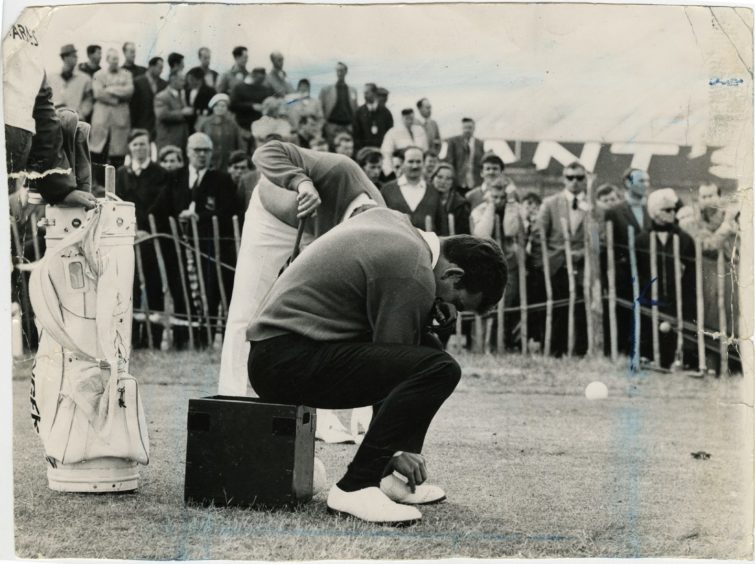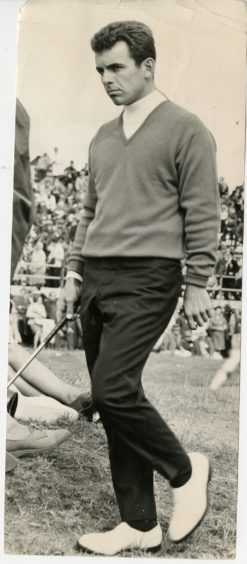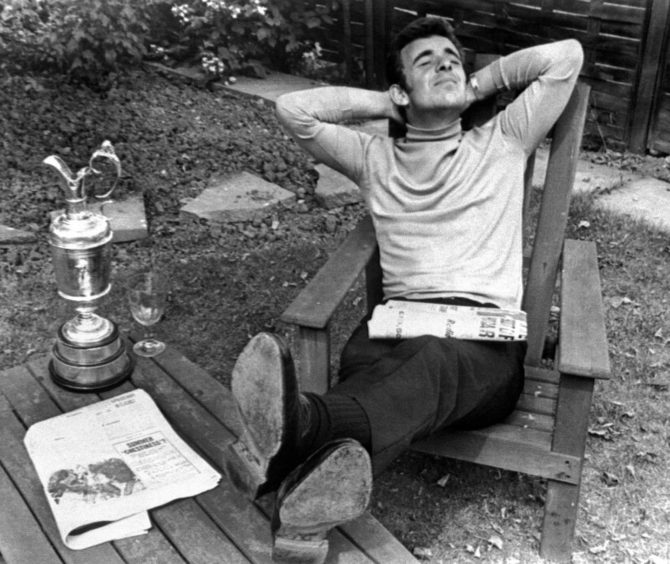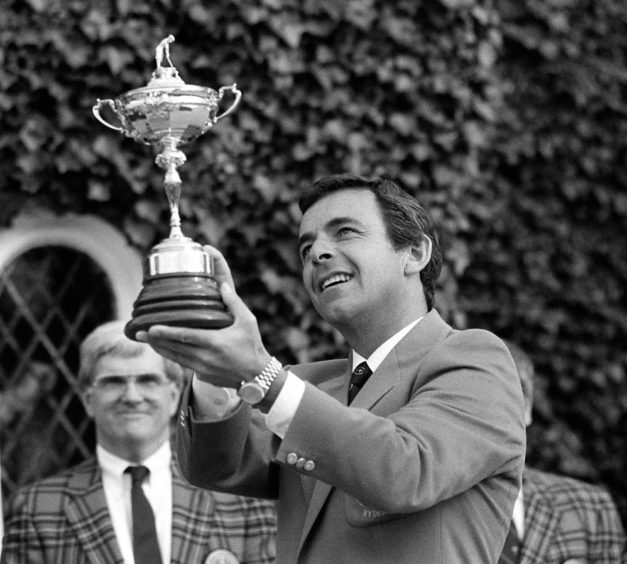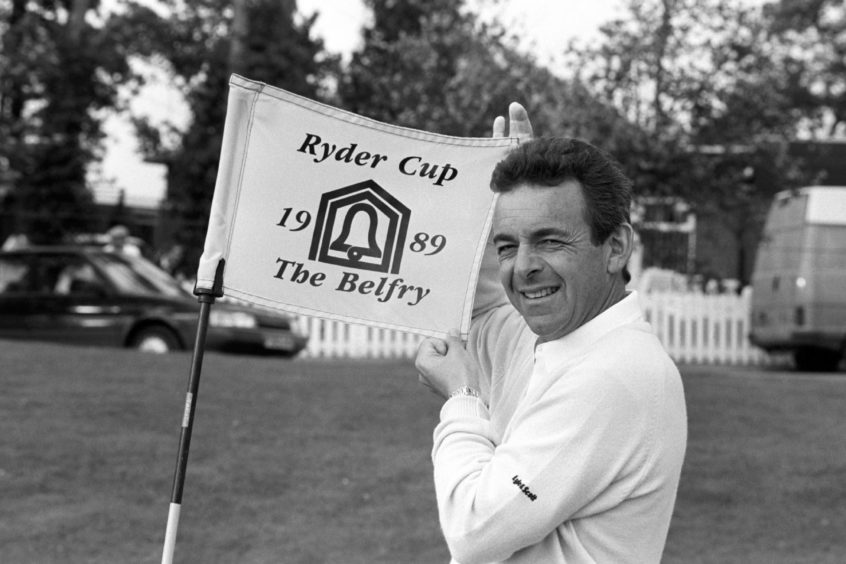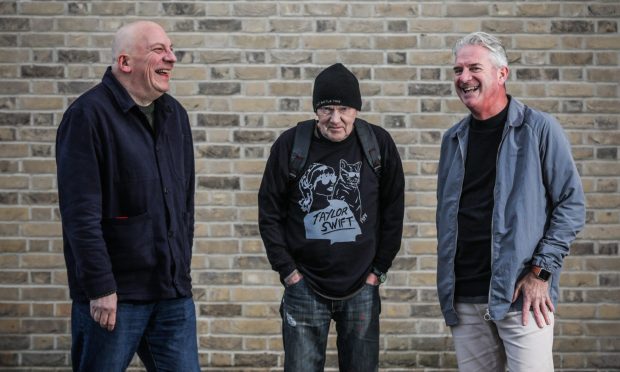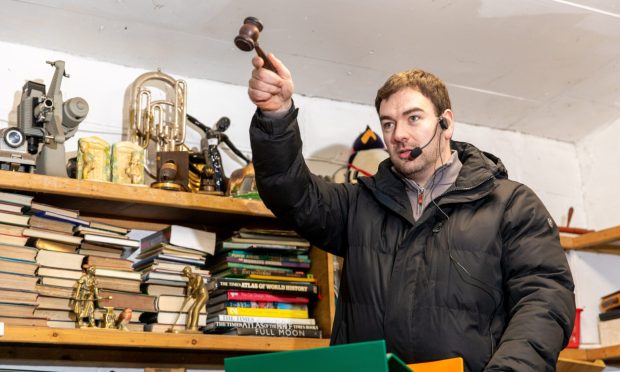We’ve all experienced a laundry catastrophe but 50 years ago golf legend Tony Jacklin almost lost his US Open winnings after they were taken to the cleaners in Dundee.
The cheque for $21,006 was found when Dudley’s works manager John Collins was pressing several of Jacklin’s golf trousers ahead of the 1970 Open at St Andrews, which was long before he donned the sparkles and sequins in Strictly Come Dancing.
It all happened after Jacklin had shot under-par in all four rounds on his way to a seven-stroke victory at Hazeltine National Golf Club and his only US Open title which was the second of his two major championships.
He was staying in Dundee before competing in the 1970 Open and several pairs of Jacklin’s trousers were sent to the cleaners ahead of his defence of the Claret Jug.
“It is normal practice to go through the pockets of clothing which is sent to us,” said Mr Collins.
“You could have knocked me down with a feather when I came across the cheque.
“As soon as I saw it I reckoned it was the one he had won in the US Open because of the amount and how recently he had won it.”
Jacklin’s wife Vivien said they didn’t even know the cheque was missing as she tried to unravel the mystery.
“It seems as though the cheque that was found could well be his US Open one,” she said.
“But I don’t understand how it could have gone to the cleaners.
“I check all his pockets before his things are sent off.
“I may have overlooked it because of all the rush and excitement of the last few days.”
Mrs Jacklin said she had removed her husband’s US Open cheque from his pocket on the night he had been presented with it.
“I think he put it in his briefcase but he could have slipped it back into the pocket of another pair of trousers,” she said.
“In fact right at this moment he has another cheque in a trouser pocket which he was given recently.
“I’ll have to remove that one in case the same thing happens.”
The Jacklin family were staying at the NCR guest house in Dundee and the cheque was sent back with the clothes and given to a maid who left it lying out beside the change.
Jacklin picked up the cheque and put it back in his briefcase without knowing it left the house or how close it had come to being had gone to the cleaners.
The Englishman’s good luck deserted him in the first round at St Andrews when his chances of a course record ebbed away like a fast-flowing tide under a cloudburst at the Old Course.
A thunderstorm interrupted his round when he was eight under par.
He was on course for a record score of 63 or 64 before play was suspended.
Play was suspended.
Jacklin resumed his round the following morning after a breakfast of bacon and eggs.
The champion struggled and he took extra strokes at three of his five remaining holes to finish with a 67.
Jacklin, who donned waterproofs midway through his round as the rain started to increase, walked into the clubhouse afterwards wet, tired-looking and obviously upset.
“If I said how I felt you would not be able to print it,” he said.
“I just didn’t get the feel of my clubs because of the rain and my waterproof gear.
“The greens were only half the pace of yesterday and I was leaving myself short all the time.”
The first round was also memorable because of two uninvited animals that thrust themselves into the limelight.
England’s Tommy Horton had his concentration broken by a swallow at the 18th hole while he was lining up a 10-yard putt which would have set a new course record of 65.
The Ham Manor professional was about to putt when the swallow swooped down over the ball and did a figure-eight turn round the golfer before disappearing back into the clouds.
Horton waited until it had vanished out of sight before making his putt which he left a foot short of the hole before tapping in to equal the course record which was held jointly by Jack Nicklaus, Peter Alliss and Bernard Hunt.
Arnold Palmer was dogged by similar bad luck at the first where he was poised to tap in a four-footer for a birdie when a large black mongrel dashed across the green and the nearby 18th fairway.
Palmer frowned, lined up the putt again, but missed by a few inches.
Jacklin would follow up the 67 with rounds of 70, 73 and 76 and finished fifth.
Jack Nicklaus won the Claret Jug following a play-off with Doug Sanders over 18 holes to win the second of his three Open Championship titles.
“There is no place I would rather win a championship than here,” Nicklaus said after receiving the trophy and cheque for £5,250.
“My wish has come true. If you are going to be remembered as a player you must win at St Andrews.”
What he did with the winning cheque is unknown…
Jacklin made Britain fall in love with golf again
Tony Jacklin made Britain fall in love again with golf in the summer of 1969.
The man from Lincolnshire took on the superstars from around the world and claimed the sport’s biggest prize.
Jacklin won The Open and just two months later he claimed the half point needed to ensure the Ryder Cup was shared between Great Britain and Ireland and America.
By 1969 it had been 18 years since Max Faulkner had been the last British player to claim the Claret Jug.
In the intervening years players came from far and wide to master the links game.
There were five triumphs for Peter Thomson of Australia, while Arnold Palmer, Gary Player and Jack Nicklaus had all been Open champions.
Having just turned 25 as he arrived at Royal Lytham in July 1969, Jacklin had already proved his credentials.
He had won on home soil and, more importantly, in America.
Playing with Palmer in the final round, he had won the PGA Tour event in Jacksonville the year before.
Steady opening rounds of 68 and 70 saw him tied for third after 36 holes, three strokes behind leader Bob Charles.
The New Zealand left-hander had won The Open the previous time it was played at the Lancashire course in 1963 and was a strong favourite.
As Charles faltered in the third round with a 75, Jacklin produced a solid 70 to open up a two-shot advantage.
He didn’t produce spectacular golf in the last 18 holes but he kept his two-stroke lead as he got to the 18th tee.
With sand traps left and right, the tee shot was crucial.
He took out his driver, remained positive and crashed it straight down the middle.
From there a seven-iron found the green.
But as he made his way through the crowds, he lost a shoe.
But he didn’t lose his concentration before two putts sealed his glory, with the last of those from such close distance that commentator Henry Longhurst described it as “the shortest shot that ever won a championship”.
It was all captured on colour television for the first time in Open history.
His stock would rise even further among British golf fans in September that year, little more than 20 miles down the Irish Sea coast.
The venue was Royal Birkdale for the Ryder Cup.
GB & I had won only two of the previous 17 contests, but there was a renewed confidence in home ranks thanks to the presence of Jacklin.
The match remained in the balance until the final hole of the final match: Jacklin against Nicklaus.
Nicklaus had a putt to win but raced it seven feet past the hole.
Being the champion he was, the American showed nerves of steel to ram it home.
Yet rather than force Jacklin to hole a short putt, Jack told him to pick up his marker.
Their game was halved and so was the Ryder Cup.
That moment of sportsmanship became remembered in the annals of golfing history.
It also sparked a lifelong friendship between the two men.
Jacklin won the 1970 US Open with the most dominant performance of his career as he led from start to finish, eventually winning by seven strokes at Hazeltine.
No European had won the US Open for 44 years before him and no one would win it again for another 41 years after him until Graeme McDowell in 2010.
He continued winning tournaments but there were no more majors.
He became the captain of Europe in 1983 and they lost by a single point in his first Ryder Cup.
By the time of the next home game two years later, Jacklin’s boys were ready and amid triumphant scenes at the Belfry, the Ryder Cup was won for the first time since 1957.
Then in 1987, against his old friend Nicklaus, Jacklin masterminded a first win on American soil.
He later received a CBE in the 1990 New Year Honours.
In 2013, Jacklin took part in the eleventh series of the BBC1 Saturday night entertainment competition, Strictly Come Dancing.
He was the first celebrity to be eliminated from the show.
